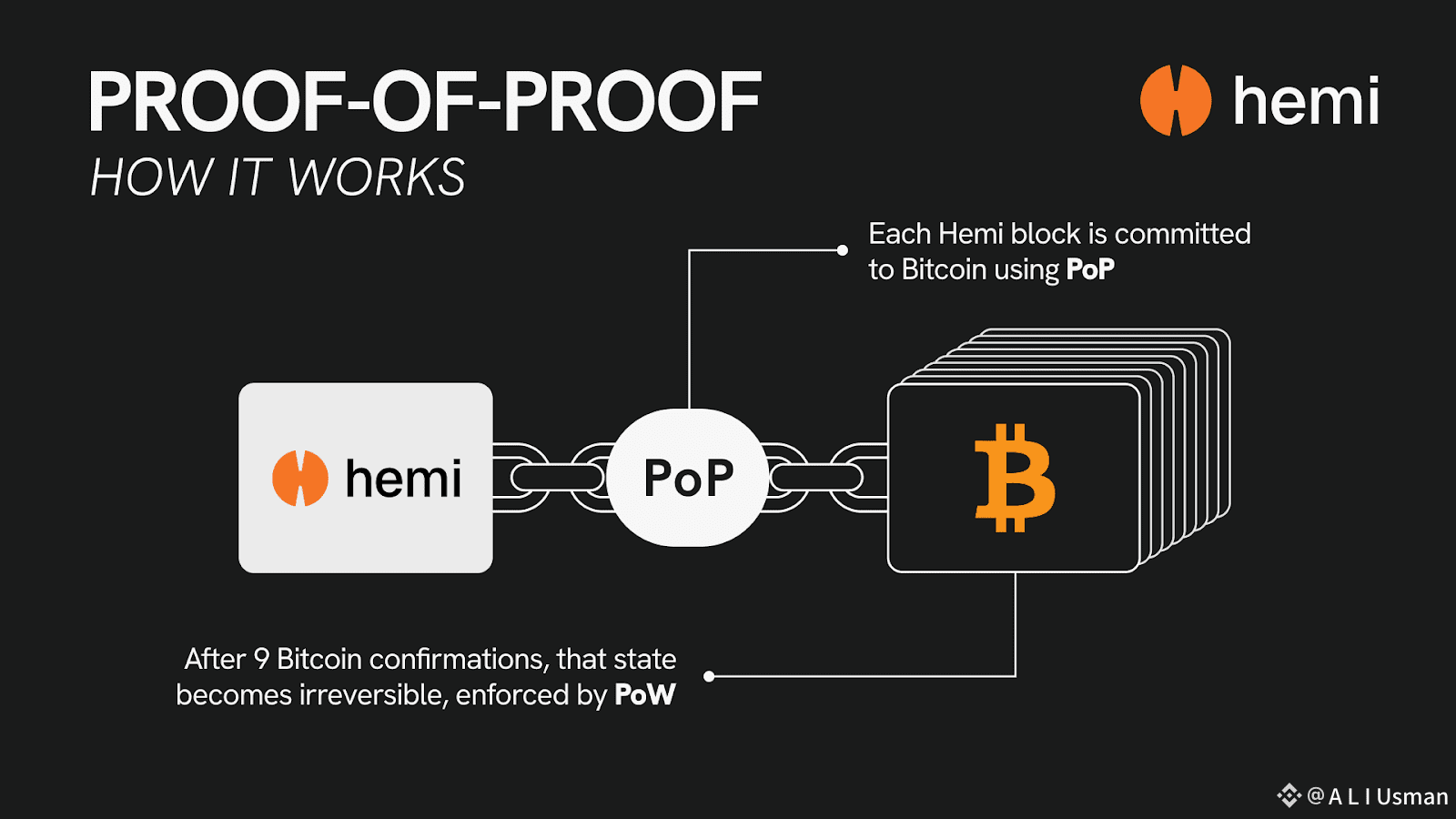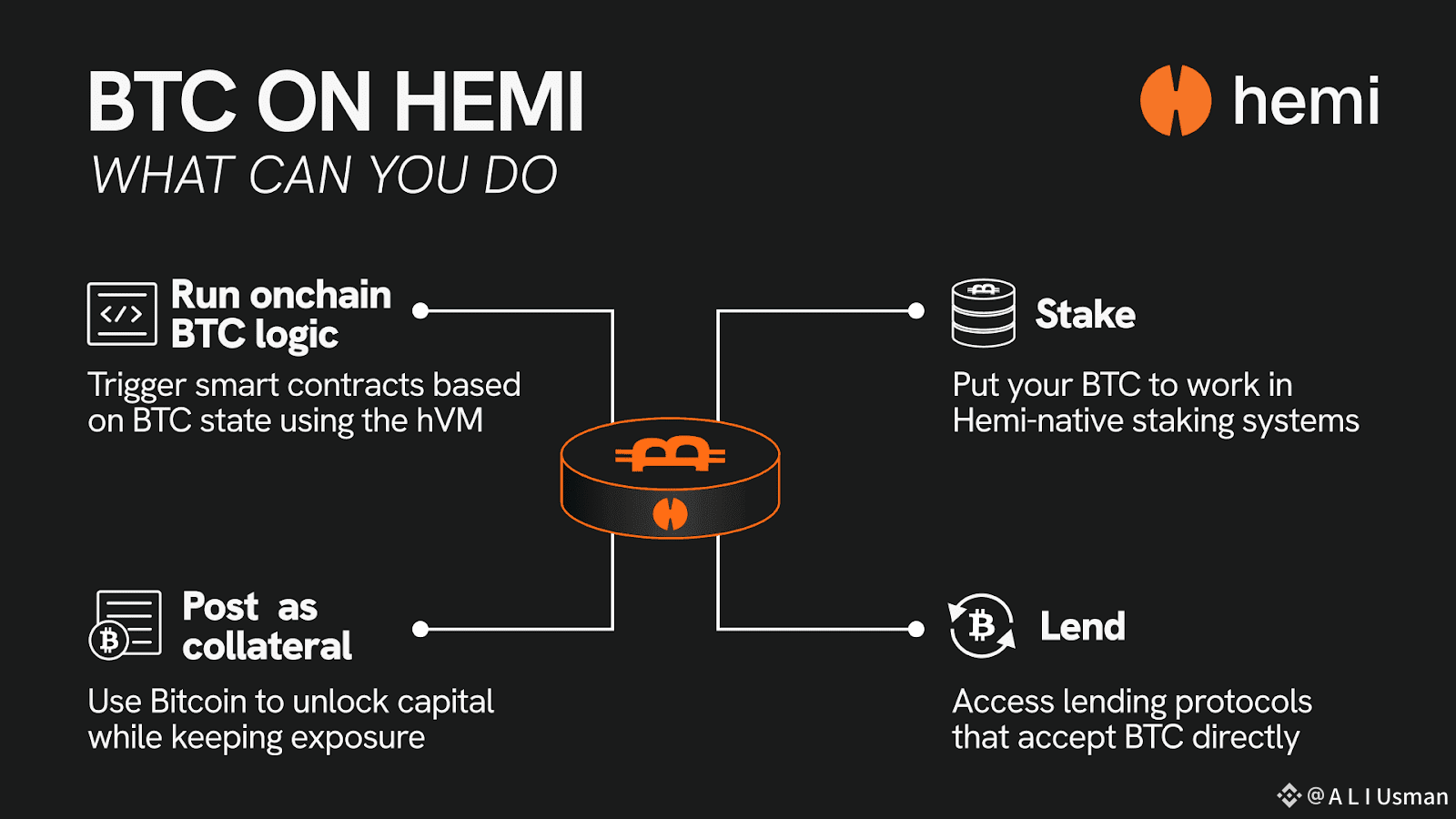Hemi Isn’t Just Scaling — It’s Making History Impossible to Erase
I’ll be honest. I used to think “immutable blockchain” was just marketing fluff. Like sure everything’s “on-chain” until a bridge gets hacked or a validator vanishes and suddenly your “permanent” record is gone with the wind.
But then I looked at Hemi. And something clicked.
Hemi doesn’t treat proof like a nice-to-have audit trail. It makes proof the foundation. Every transaction, every state change, every smart-contract execution — it all gets compressed into cryptographic commitments and anchored directly onto Bitcoin. Not as a side-note. Not as a symbolic nod. But as a permanent entry in the most battle-tested ledger on Earth.
That changes everything.

What is Hemi?
Put simply: Hemi is a modular Layer-2 protocol built to unify the strengths of Bitcoin and Ethereum — security from Bitcoin, programmability from Ethereum.
Key components:
Proof-of-Proof (PoP): Snapshots of state bundled and anchored to Bitcoin’s blockchain for finality.
hVM (Hemi Virtual Machine): An EVM-compatible environment that embeds a full Bitcoin node, allowing smart contracts to access Bitcoin data directly (UTXOs, blocks) with standard Solidity tools.
Tunnels: Trust-minimised asset transfers (not reliance on fragile bridges) between chains.

Why This Matters (Analytical Insight)
Security Assurance: By anchoring to Bitcoin via PoP, Hemi leverages a trillion-dollar hash-rate ecosystem and years of battle-testing. Liquidity may shift, but the ledger stands.
Programmability + Real-World Assets: With hVM, developers don’t have to choose between “fast smart contracts” and “blockchain finality”. They get both — and they can program directly against Bitcoin data.
Modular Architecture: The segmentation of sequencers, hVM, PoP anchoring means upgrades or changes in one layer don’t compromise the entire security or history chain. Robust design for longevity.
Institutional Appeal: For regulated entities, auditors, fintechs, the value is clear: provable, permanent records you can verify, native access to Bitcoin collateral, and tooling compatible with widely-used developer stacks.

Risks & Considerations
Competition & Execution: Many chains claim “scalability + security”. Hemi’s differentiator is Bitcoin anchoring — but that advantage depends on adoption and integration of real-world protocols.
Developer & Ecosystem Momentum: Features and architecture aren’t enough without ecosystem support: developer adoption, DeFi integrations, real-world asset tokenisation.
Regulatory Landscape: When bridging Bitcoin and DeFi, token flows and cross-chain activity may draw regulatory scrutiny. Permanent, verifiable records help—but regulation could still impact.
Tokenomics & Value Capture: The native token (HEMI) must align with usage, security incentives and ecosystem growth. If the token doesn’t capture value meaningfully, the network’s promise risks being undervalued.
My Take
In a world where many Layer-2s shout about “TPS” and “liquidity”, Hemi quietly argues a different question: What if your blockchain actually lasted? Not just for the next bull cycle. But for decades. For auditors. For courts. For history.
By anchoring everything to Bitcoin, Hemi turns each transaction from a claim into a fact — not just “we promise it’s valid”, but “go verify it yourself on Bitcoin”. That subtle shift—from trust to proof—is huge.
It may not trend at the moment, it may not ride the hype waves. But when the next bridge fails, or the next “permissionless” chain freezes assets, people will remember: Some chains were built to disappear. Others were built to endure.
Hemi chose to endure.
And in the long-game of crypto infrastructure, that might be the only metric that matters.


